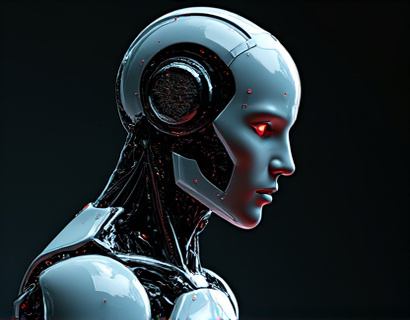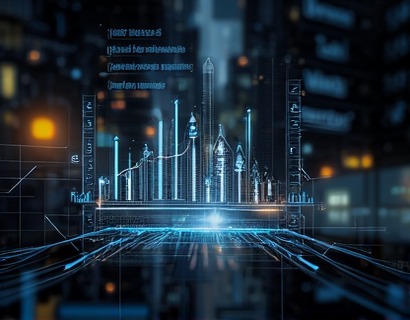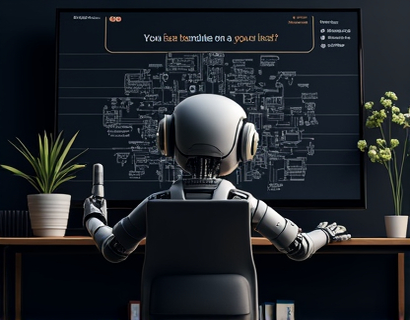Smart Home Elevation: Embracing the Future of Living with Innovative Appliances
In the rapidly evolving landscape of home technology, the concept of a smart home has transcended from a futuristic dream to a tangible reality. The integration of advanced appliances and devices into our living spaces is not just a trend but a transformative shift in how we experience daily life. This article delves into the latest innovations in smart home appliances, exploring how these technologies can seamlessly blend into your modern lifestyle, enhancing convenience, efficiency, and comfort.
The journey towards a smart home begins with understanding the core components that define this ecosystem. At its heart, a smart home is a network of interconnected devices and systems that communicate with each other to create a more intuitive and automated living environment. These devices range from smart thermostats and lighting systems to advanced security cameras and voice-controlled assistants. Each component plays a crucial role in creating a cohesive and user-friendly experience.
Smart Thermostats: The Brain of Energy Management
One of the most impactful smart home appliances is the smart thermostat. These devices go beyond simple temperature control, offering advanced features that optimize energy usage and enhance comfort. Smart thermostats learn your schedule and preferences, adjusting the temperature automatically to save energy when you're away or asleep. Models like the Nest Learning Thermostat and Ecobee SmartThermostat stand out for their intuitive interfaces and robust functionality.
These thermostats can be controlled remotely via smartphones or voice commands through integration with smart speakers. This level of control not only ensures a comfortable home environment but also leads to significant energy savings. According to the U.S. Department of Energy, properly using a smart thermostat can reduce heating and cooling costs by 10% to 12% annually.
Smart Lighting: Illuminating the Way to Energy Efficiency
Lighting is another area where smart technology has made substantial advancements. Smart light bulbs and fixtures offer unparalleled flexibility and energy efficiency. Devices like Philips Hue and LIFX allow you to adjust brightness, color, and even create scenes with a simple voice command or through a mobile app. These systems can be programmed to mimic natural light cycles, improving mood and sleep quality.
Energy savings are a significant benefit of smart lighting. Traditional incandescent bulbs convert most of their energy into heat, while smart LED bulbs use up to 80% less energy and last much longer. Smart lighting systems can also be set to turn off automatically when rooms are unoccupied, further reducing energy waste.
Smart Security: Protecting Your Home with Advanced Technology
Home security has evolved dramatically with the advent of smart technology. Smart security cameras, door locks, and alarm systems provide comprehensive protection while offering peace of mind. Devices like the Ring Doorbell and Nest Cam offer high-definition video, motion detection, and two-way audio, allowing you to monitor and interact with visitors from anywhere.
Smart door locks, such as the August Smart Lock, provide keyless entry and can be controlled remotely. This not only enhances security but also offers convenience, as you can grant temporary access to guests or service providers without the need for physical keys. Integration with smart home hubs ensures that all security devices work in harmony, providing a unified and robust security solution.
Voice Control: The Central Nervous System of Smart Homes
Voice control is a cornerstone of the smart home experience, making devices accessible and easy to use. Smart speakers like Amazon Echo and Google Nest Hub serve as the central hub for voice commands, controlling everything from lighting and temperature to entertainment systems. These devices use advanced natural language processing to understand and execute commands accurately.
The convenience of voice control extends to hands-free operation, which is particularly useful in situations where using a device manually is impractical. For instance, adjusting the thermostat or turning on lights without getting up from the couch enhances daily convenience and accessibility. Voice assistants also integrate with various smart devices, creating a seamless and interconnected home environment.
Smart Appliances: Revolutionizing Kitchen and Laundry Routines
Smart appliances in the kitchen and laundry room are transforming routine tasks into efficient and enjoyable experiences. Smart refrigerators, like the LG InstaView, come equipped with features such as built-in cameras, allowing you to check the contents of your fridge from your smartphone. These refrigerators can also generate shopping lists based on what's running low, streamlining your grocery shopping process.
Smart ovens and ranges offer precise temperature control and pre-heating capabilities, ensuring your food is cooked to perfection. Models like the Samsung Family Hub Oven connect to your smartphone, enabling remote monitoring and control. Additionally, some smart ovens have self-cleaning functions and can even suggest recipes based on the ingredients you have on hand.
In the laundry room, smart washers and dryers from brands like Samsung and Whirlpool offer advanced features such as Wi-Fi connectivity, allowing you to start, stop, and monitor cycles from your phone. These appliances can also notify you when a cycle is complete or if there's a problem, ensuring that your clothes are always well-cared for.
Smart Home Automation: Creating a Seamless Living Experience
The true power of smart home technology lies in its ability to automate and integrate various devices and systems. Smart home automation platforms like Samsung SmartThings and Google Home allow you to create custom scenes and routines that control multiple devices with a single command. For example, you can set a "Good Morning" routine that gradually brightens the lights, starts your coffee maker, and adjusts the thermostat to your preferred temperature.
These platforms also support geofencing, which triggers actions based on your location. For instance, your home can automatically lock doors and turn off lights when you leave, or pre-heat the oven when you're on your way home from work. This level of automation not only enhances convenience but also contributes to energy efficiency and security.
Sustainability and Smart Home Technology
One of the most compelling reasons to adopt smart home technology is its potential to promote sustainability. Smart devices can significantly reduce energy consumption, lower carbon footprints, and contribute to a more environmentally friendly lifestyle. Energy-efficient appliances, smart thermostats, and intelligent lighting systems work together to optimize resource usage, making your home more sustainable without compromising comfort.
Moreover, many smart home devices are designed with eco-friendly materials and manufacturing processes, aligning with the growing demand for sustainable products. By choosing smart home solutions, you're not only enhancing your living experience but also contributing to a greener planet.
Challenges and Considerations
While the benefits of smart home technology are undeniable, there are several challenges and considerations to keep in mind. One of the primary concerns is privacy and security. Smart devices collect and transmit data, which can be a target for cyber threats. It's essential to choose reputable brands that prioritize security and to implement strong passwords and regular software updates to protect your home network.
Another consideration is compatibility. Ensuring that different devices from various manufacturers work seamlessly together can be challenging. However, the adoption of industry standards like Matter is helping to address this issue, promoting interoperability among smart devices.
Cost is also a factor, as high-end smart devices can be expensive. However, the long-term savings on energy bills and the convenience they provide often justify the initial investment. Additionally, many smart devices offer budget-friendly options that still deliver significant benefits.
Future Trends in Smart Home Technology
The smart home landscape is continually evolving, with several exciting trends on the horizon. One of the most promising developments is the integration of artificial intelligence (AI) and machine learning. AI-powered smart home systems can learn from your habits and preferences, making predictions and adjustments to enhance your living experience even further.
Another trend is the expansion of voice control beyond simple commands to more complex conversations and natural language interactions. This will make smart home devices even more intuitive and user-friendly. Additionally, the growth of 5G technology will enable faster and more reliable connections, supporting a larger number of connected devices and more sophisticated applications.
Health and wellness are also becoming increasingly important in smart home design. Devices that monitor air quality, humidity, and even stress levels are emerging, providing insights and recommendations to improve your well-being. Smart home technology is not just about convenience; it's about creating a healthier and more balanced living environment.
In conclusion, the integration of smart home appliances and devices offers a transformative approach to modern living. From energy-efficient thermostats and intelligent lighting to advanced security systems and voice-controlled assistants, these technologies enhance convenience, efficiency, and comfort. As the smart home ecosystem continues to evolve, it promises to deliver even more innovative solutions that will further elevate our daily lives. Embracing these advancements not only makes your home smarter but also more sustainable and enjoyable.










































